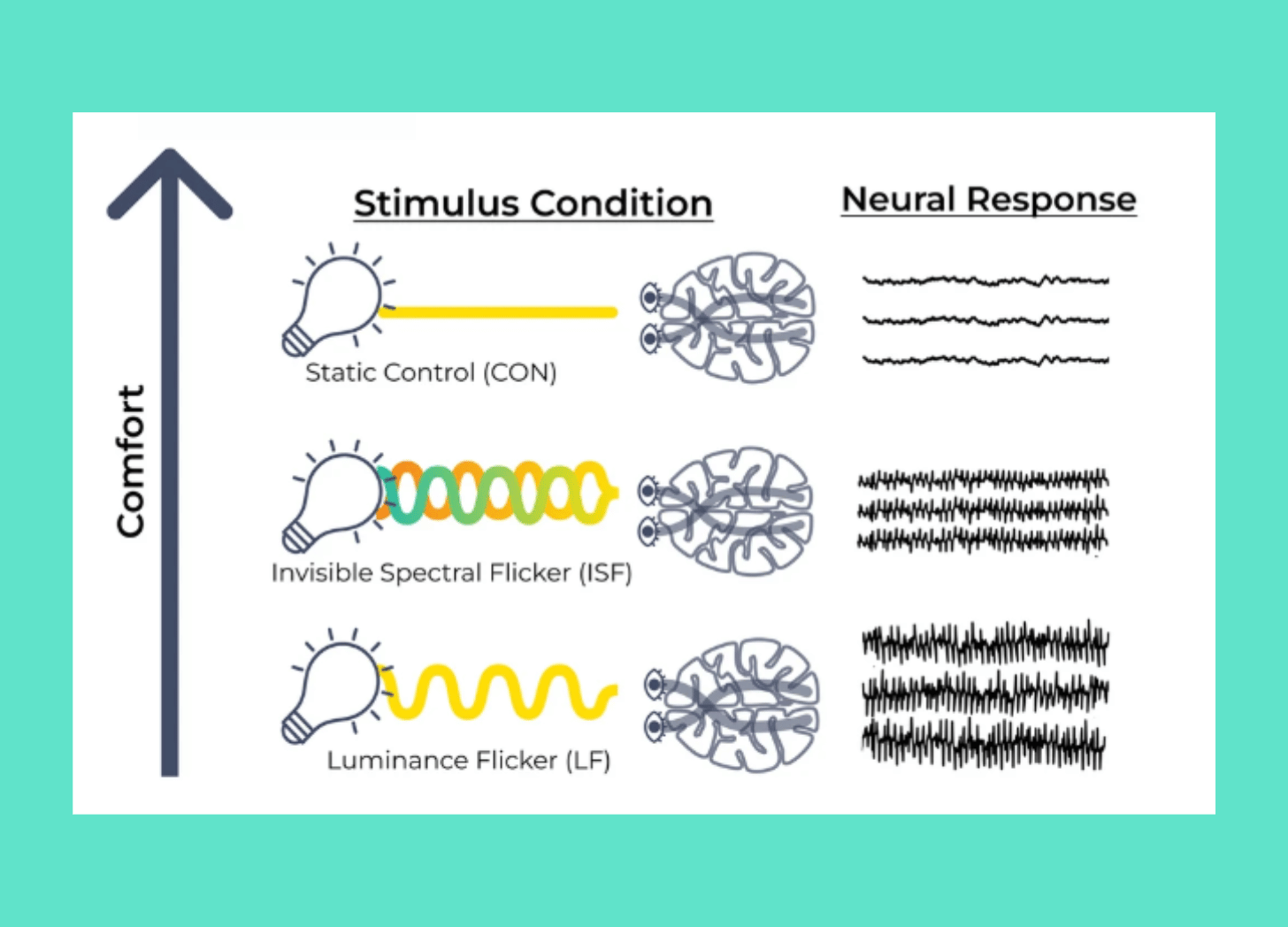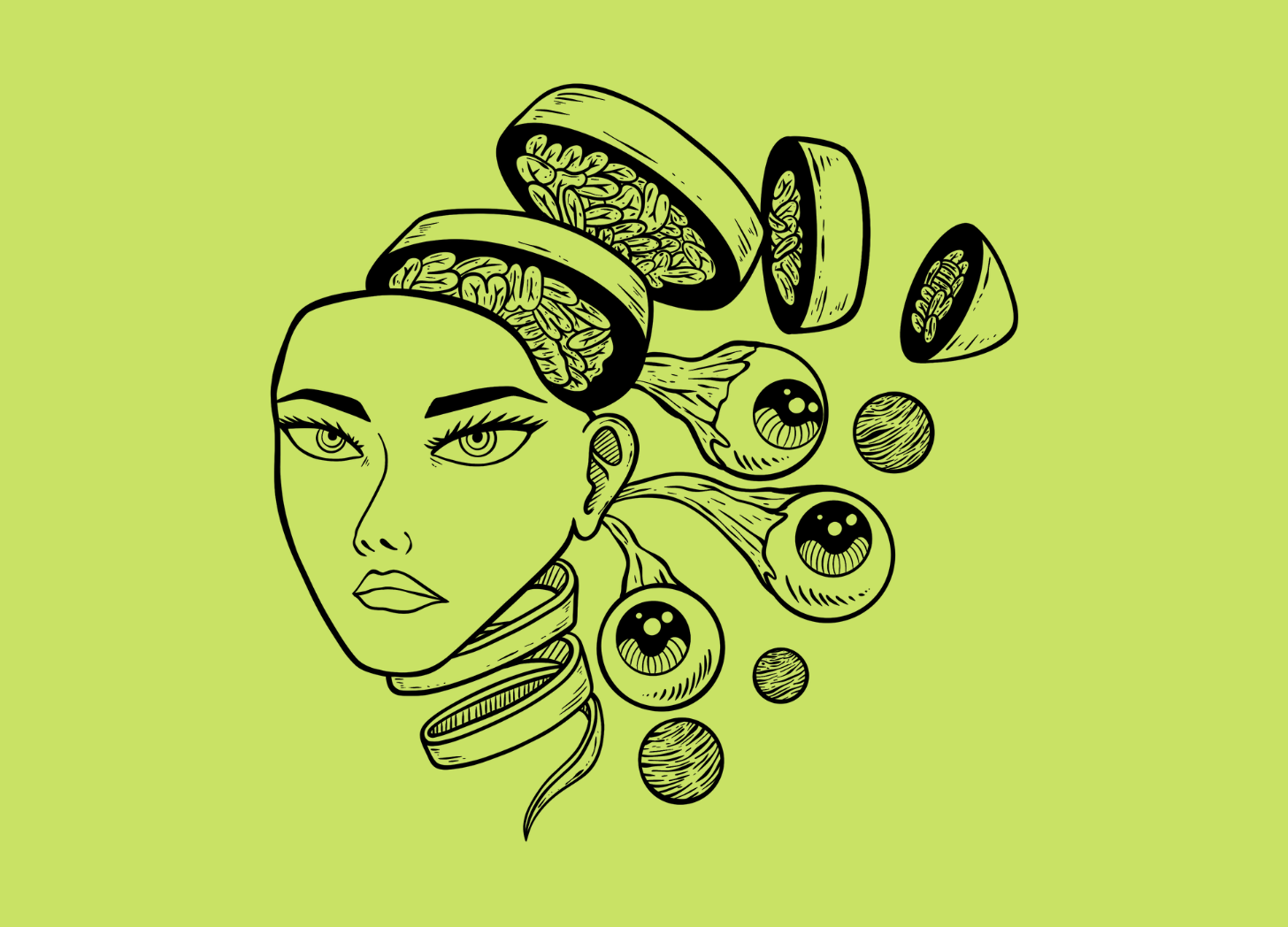A Light Dose: Can Pulsating LEDs Replace Psychedelics?
Is the NeuroVizr a new, innovative “psychoactive technology” or just another buzz-worthy gimmick infiltrating the psychedelic space?
While wandering the streets of a quaint European town (Tallinn, Estonia), I stumbled across a clinic with an unexpected sign outside.
Intrigued by all things mind-altering, the words psychedelic and microdose caught my eye.
“Surely psychedelic substances aren't legal in Estonia,” I thought.
I was correct.
What this clinic offered wasn't a legal psychedelic experience at all. Instead, it provided so-called “drug-free microdosing” — induced by blasting pulsating LED lights into your closed eyes…
As I peered through the window of the unusual clinic I'd found, I was met with a rather dystopian image — five or six people sat upright, smiling as if in some kind of trance. Strapped to their faces were masks flashing intense white light into their closed eyes…
The masks read “NeuroVizr.”
It was time to find a cafe and do some research before I stumbled into some kind of Black Mirror episode.
A quick search led me down a rabbit hole of claims, testimonials, and technological jargon. It seemed the NeuroVizr wasn't just another wellness gimmick. Its creators described it as “psychoactive technology” that's designed to shift consciousness using nothing more than light — no substances, no smoking, and no funky-tasting mushrooms, just flickering lights.
Supporters praise it as a “breakthrough in neurohacking” — a non-invasive way to “microdose” to achieve altered states without the potential legal and psychological risks of chemical psychedelics.
On the other hand, skeptics dismiss the tech as a glorified strobe light — an overpriced placebo wrapped in pseudoscientific jargon that could potentially do more harm than good.
It feels a bit like those electro-fat machines that claim you can lose weight without working out. Sure, they promise a lot, but the actual results are pretty underwhelming.
In the same vein, light therapy promises big changes to your mind with very little effort, but is this technology truly an evolution in cognitive enhancement and a way to experience psychedelic effects without chemical intoxication? Or, just another expensive trend exploiting the growing interest in psychedelic microdosing?
It was time to dig a little deeper…
The Reported Effects of Light Therapy Using the NeuroVizr
The NeuroVizr and similar light therapy devices claim to induce altered states of consciousness by delivering carefully calibrated flashing light patterns into closed eyelids.
According to its creators, the NeuroVizr's rhythmic light patterns stimulate the brain's neural oscillations — supposedly leading to a range of emotional, cognitive, and spiritual effects.
Some users report deep relaxation, euphoria, and enhanced creativity. Users also report closed-eye visuals, geometric patterns, colors, and fractals that are reminiscent of a psychedelic trip induced by classic psychedelics like LSD and psilocybin.
In my research, I was surprised to learn that experiencing “trippy” effects from flashing lights isn't a new phenomenon.
Stroboscopic light stimulation has been around for decades. In the early 1900s, neurophysiologists like William Grey Walter experimented with intermittent photic driving (intermittent light flashing) and discovered that it can inducen (mild) hallucinations by “altering neuronal activity between the thalamus and the visual cortex.”
William Grey Walter believed that photic light patterns could induce mental states associated with meditation, dreaming, and heightened awareness.
Does Stroboscopic Light Stimulation Work?
One thing is for sure, stroboscopic light stimulation can definitely induce closed-eye hallucinations. But whether the light affects the parts of the brain that are responsible for the “mystical experience” associated with classic psychedelics is another story.
There's little proof that light therapy holds any therapeutic value, and the evidence suggesting it improves cognitive function is limited.
Studies have found that stroboscopic light stimulation may improve visuomotor skills and reactive agility in sports settings. When stroboscopic light stimulation is implemented during soccer and volleyball training, the athlete’s reactive agility seems to improve.
Other studies have discovered that stroboscopic light training may help improve visual impairment in patients suffering from neurological conditions such as Parkinson’s disease. However, the results varied from patient to patient, and the exact training protocol (patterns and intensity of light) used heavily influences the practice’s effectiveness.
So, while there is some evidence that stroboscopic light stimulation may improve certain aspects of cognition in the right setting and in the right patients, the evidence that these methods can emulate the effects of psychedelics is weak.
There's also a risk that overstimulating the brain with high-intensity flashing lights could lead to eye strain, headaches, migraines, and even seizures.
Brainwave Entrainment
The stroboscopic light patterns employed by the NeuroVizr rely on a concept called brainwave entrainment to work. This technique uses rhythmic stimuli, such as sound, light, or vibrations, to synchronize brainwave frequencies with the frequency of the external stimulus.
The idea behind brainwave entrainment is that when the brain is exposed to a consistent rhythm or pattern, it will "entrain" or re-align its own brainwave frequencies to match that rhythm.
This is used to promote specific mental states, such as relaxation, focus, or deep sleep, depending on the frequency used.
For example, low-frequency brainwaves (like delta or theta waves) are associated with deep sleep or relaxation, while higher frequencies (like beta waves) are linked to heightened alertness and concentration.
While brainwave entrainment shows potential, research on its impact has been wildly inconsistent — some studies support its benefits, while plenty of others fail to show any improvement whatsoever.
There's also a concern that artificially manipulating your brain's frequency has the potential to cause negative impacts or unwanted behaviors (shocking, I know).
For example, some users report increased anxiety, headaches, and difficulty concentrating following a brainwave entrainment session. Others have reported disruptions in sleep patterns or heightened emotional sensitivity.

Is Light Therapy A Viable Alternative to Psychedelics?
In my opinion, definitely not.
NeuroVizr claims to be the “electronic equivalent to psychedelics” — a comparison we consider to be grossly misleading.
The effects of this device have virtually no overlap with the profound, mind-altering experiences psychedelics provide and offer nothing close to the depth, introspection, or therapeutic potential of actual psychedelic experiences.
The effects of brainwave entrainment used by these devices can certainly help modulate mental states like relaxation, focus, and sleep — but their effects are typically short-term and surface-level. Once you take the device off, your brain returns to normal within a few short minutes.
Unlike psychedelics, stroboscopic light stimulation doesn't induce deep emotional breakthroughs or lasting changes in consciousness — and the evidence that it can be used to “promote neuroplasticity” is sketchy at best.
Call me a purist… but I feel like strapping a device that repeatedly flashes bright lights directly into your eyes to synthetically alter your brainwaves and "unlock effortless meditation" is about as far from the essence of psychedelics as you can get.
Psychedelics — whether psilocybin, LSD, or DMT — work by engaging serotonin receptors in the brain to induce profound shifts in consciousness. These shifts open our minds for deep introspective states that often result in profound, lasting changes in worldview.
Light therapy, on the other hand, is more of a surface-level illusion that can create visually interesting experiences, and temporarily induce a state of calmness and relaxation — but falls far short of facilitating the emotional breakthroughs or sustained neuroplasticity that psychedelic-assisted therapy can offer.
New Tech vs. Nature: Which Should You Choose?
If you've got $600 weighing down your pockets and are looking for a way to trick your mind into feeling relaxed for a few minutes while you wear a bargain-bin MIB-style neuralyzer, the NeuroVizr is well worth a go.
Jokes aside… while this article has been pretty negative toward this technology, I still think it has a place…
I don't think it offers potential for therapy or improving cognitive function. However, it could be a reliable way for people to disengage from episodes of mental distress and for athletes to condition faster reaction time before a big game.
From a psychedelics perspective, it could offer a legal method for experiencing mild closed-eye visuals without having to ingest any actual psychedelics — just don’t expect anything too crazy.
If you want to explore the inner workings of your mind and spirit, sticking to nature with classic psychedelics is the best way forward, in my opinion. If consuming substances isn't your forte, guided meditation likely offers more value than light therapy.
But that's just my take…
Do you have any thoughts on NeuroVizr and light therapy?
Feel free to share your thoughts and experiences in the comment section.
Further Reading
Rewiring the Mind: How Psychedelics Offer Hope for Alzheimer’s Disease
The Story of P. tampanensis: Psychedelia, Murder, & the Evolution of Magic Truffles
Spore Signals: What Mushrooms Reveal About Our Planet’s Health
Breaking the Cycle: The Psychedelic Path to Overcoming Addiction
Terence McKenna: Psychedelics, Novelty Theory, & the End of History
The Psychedelic Gut Connection: New Research Finds Your Microbiome May Be Calling the Shots
Enjoying Tripsitter? 🍄
Don’t Journey Alone! Tripsitter was built by a community of psychedelic advocates — but it’s people like you that allow us to thrive.
You can also follow us on Bluesky or subscribe to our Reddit.





